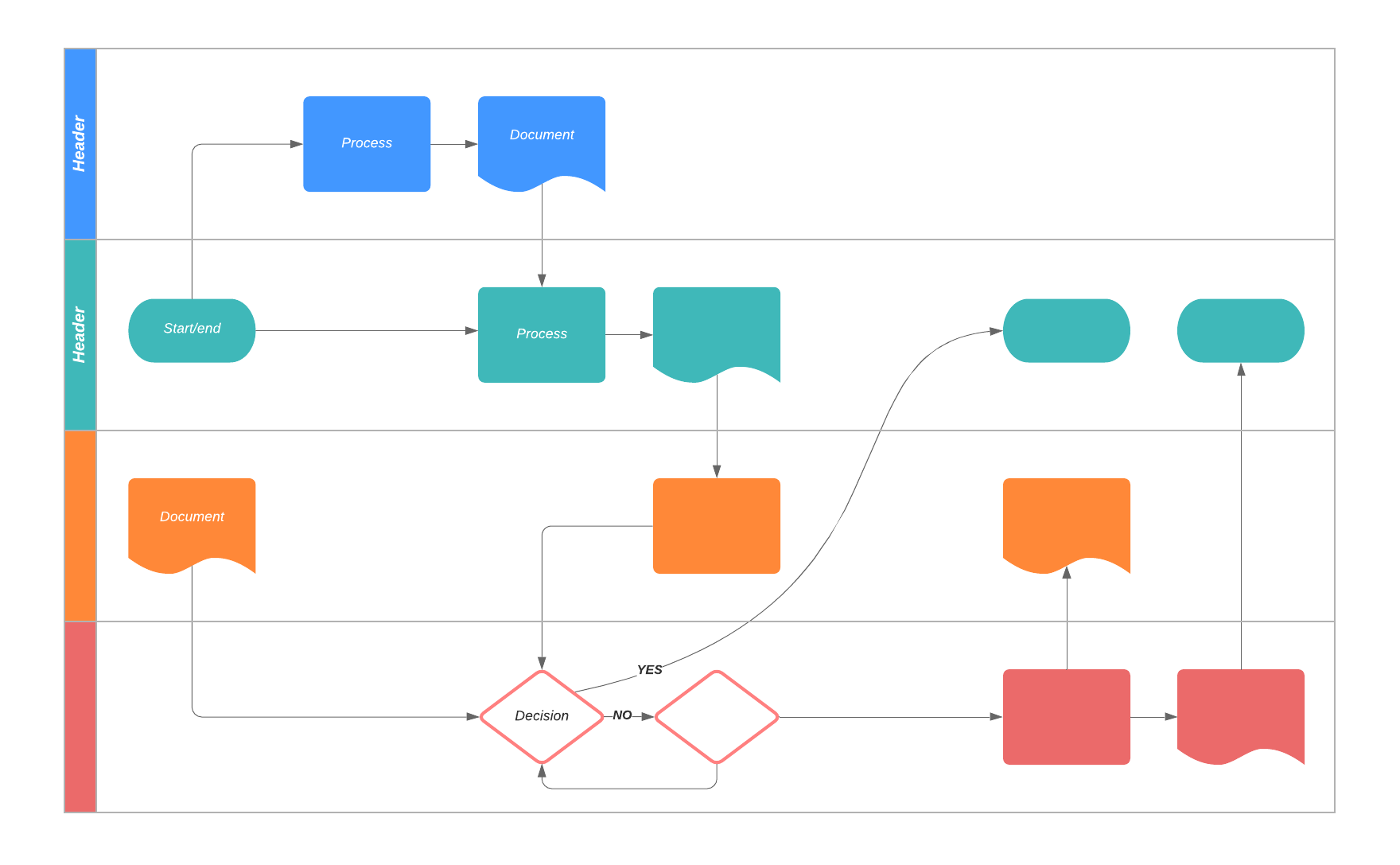At Fortune 500 companies, tech startups, and other high-performance organizations, employees soon begin to realize how their day-to-day actions affect the ability of others to achieve their goals. Which is why a sense of ownership is so critical in the workplace.
Gaining a sense of ownership helps employees care about the quality and timeliness of outcomes, take initiative when opportunities arise, and foster a culture of accountability.
But giving employees a sense of ownership doesn’t happen overnight. It requires time, effort, and strategy.
How to build team ownership into your processes
Team ownership is all about aligning employees toward a common objective and the team being driven and motivated enough to follow that goal through from start to finish. Achieving this goal also involves a personal sense of job ownership. Here are six ways to make ownership part of your team processes.
-
Try to delegate more tasks
Giving employees a sense of ownership as individuals means assigning responsibilities, tasks, and authority, not just work. Begin with assignments that play to their strengths, interests, and job roles. Later, look for leadership opportunities to keep them engaged.
Tips on how to provide a sense of ownership using delegation include:
- Learning to let go. Start small. Delegate the easier, lower priority tasks. As trust builds between you and the team, you can assign more involved tasks.
- Making it relevant. Whenever possible, assign employees to the tasks related to their experience or background, not just by availability or the lightest workload.
- Giving instructions. Provide all the necessary details for the tasks you delegate. Whether it’s a deadline to meet or a protocol to follow, be upfront with details.
- Training as needed. If no one else possesses the skills to complete a task, train someone. Any skill can be taught, and time spent teaching is a good investment.
- Trusting but verifying. After delegating a task, let employees handle them on their terms. But check in at key milestones to see if things are moving forward.
- Providing feedback. Few things are as critical to delegation than feedback. Whether it’s constructive criticism or praise, let everyone know how they’re doing.
Delegating tasks doesn’t come naturally. We often lack trust that things will get done, fear that mistakes will happen, or feel a need to remain in control. Giving employees a sense of ownership will get easier with repetition and practice.
-
Clearly communicate deadlines
When delegating tasks or assigning projects, spend time to ensure that everyone knows what’s expected of them. In particular, the deadline when their work must be completed.
Communicate all the steps involved and scope the time needed for each of those steps.
This will help clarify expectations while also breaking down the work into manageable pieces. Once deadlines are set, hold team members accountable. Ask for reports on their progress and other success metrics to demonstrate each milestone is being met.
Being non-negotiable about deadlines might seem harsh, but it’s a key aspect of how to provide a sense of ownership for the employees on your team. People appreciate the clarity and motivation deadlines provide.
-
Hold regular check-ins
Giving employees a sense of ownership includes keeping them updated on their progress and how their efforts are being perceived. Scheduling check-in meetings helps create opportunities for employees to share the status of ongoing projects and other work responsibilities with you.
Check-in meetings can take the form of daily, five-minute standup meetings or weekly, one-hour meetings. They can occur in person, online via chat or Zoom, one-on-one, or as a team.
Whatever the length or format of a check-in meeting, it should cover the following:
- What are you working on today?
- What do you plan to handle next?
- What things do you need help with?
By the end of a check-in meeting, employees will feel a greater sense of ownership and accountability. Managers will gain a better understanding of the priorities and needs for the day. Keep meetings to the point, with clear takeaways.
If issues arise during check-in meetings, schedule a follow-up meeting.
-
Give input without micromanaging
Holding employees accountable can be an effective way for giving employees a sense of ownership. However, micromanaging tends to wear down that sense of ownership.
Rather than helping team members become more independent, self-reliant, and capable of figuring out solutions, managers who seek to control every part or detail of a project undermine the confidence of their employees.
It’s okay to set clear expectations about desired results, or to provide employees with the help or guidance they seek, but at the same time, don’t be afraid of letting them fail.
Fight the urge to step in and fix things on your own or to dictate how employees should approach a task. Building a sense of ownership also means owning the results as well as knowing when to ask for help.
-
Incorporate a feedback loop
Even though they won’t always ask for it directly, most employees want feedback. To ensure it’s not overlooked, make feedback a primary part of your internal processes.
Remember, a feedback loop is a two-way street. Team members should know that they have a voice. Providing them with the ability to shape strategy, craft solutions, or share ideas are all helpful when it comes to establishing a sense of ownership for your team.
Of course, giving employees a sense of ownership also includes taking in any feedback or critique they may have for you or the company. Actively listen to the suggestions and observations your team offers. Consider their ideas and find ways to incorporate them.
Soon, your employees will become more confident, driven, and inspired. Feedback helps employees feel more connected to their work and less likely to go through the motions.
-
Share and present results
When team members share and present results on the part of the project they tackled or were responsible for, it helps declare and solidify their sense of ownership. Since goals are measurable, they’re great for demonstrating everyone’s commitment to their results.
Achieving desired outcomes and receiving positive recognition are the consequences of sharing and presenting results. Falling short of a goal knowing that must be shared and presented has its own result of pushing people to double down and do better next time.

Read more about implementing new processes successfully.
Read moreDocument processes that incorporate ownership
For employees to standardize and utilize a process, it helps for them to first visualize it. Using an intelligent diagramming solution like Lucidchart is a great place to start.
With its dynamic process maps and flowcharts, Lucidchart can help you to easily incorporate a sense of ownership by default each time a new project launches. Providing visual process documentation is great for communicating complex information quickly and effectively across your team.
Best of all, it helps managers clarify the roles and accountabilities by department, team, and individual roles within the workflow itself. Current and future states of projects can be easily outlined.

With the ability to link data and documents directly to process maps and apply conditional formatting in Lucidchart, your team will have instant access to one source of truth for the information they need.
Documenting processes in this way not only improves efficiency but it also increases transparency and accessibility for team members to thrive and innovate as they take on more ownership.

Learn more about how Lucidchart can help you document and improve your team processes.
Let’s goAbout Lucidchart
Lucidchart, a cloud-based intelligent diagramming application, is a core component of Lucid Software's Visual Collaboration Suite. This intuitive, cloud-based solution empowers teams to collaborate in real-time to build flowcharts, mockups, UML diagrams, customer journey maps, and more. Lucidchart propels teams forward to build the future faster. Lucid is proud to serve top businesses around the world, including customers such as Google, GE, and NBC Universal, and 99% of the Fortune 500. Lucid partners with industry leaders, including Google, Atlassian, and Microsoft. Since its founding, Lucid has received numerous awards for its products, business, and workplace culture. For more information, visit lucidchart.com.

